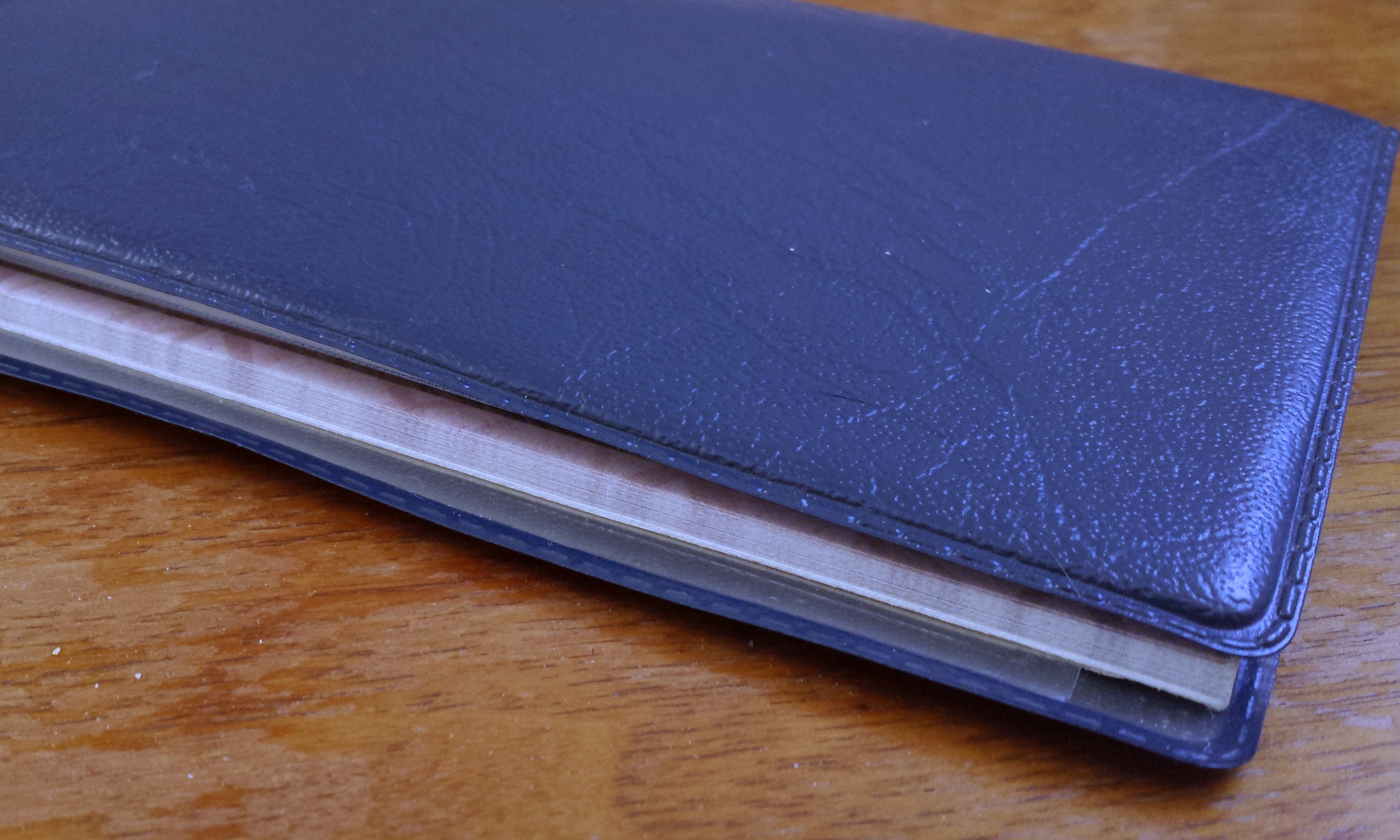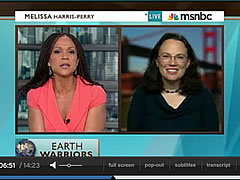What’s Plastic Got to Do with Clean Air?
 If I asked you to list the problems with plastic, you might mention toxic chemicals like BPA or phthalates; or the fact that it doesn’t biodegrade; or that animals ingest it; or that there is a toxic soup of plastic swirling around in the world’s oceans.  Those are the issues I’ve focused on for the past 5 years, so last year, when Moms Clean Air Force asked me to write a blog post for them, I balked.  “Clean air is a vitally important environmental issue,” I said, “but my blog focuses on plastic, not air.  Plus, I’m behind on writing my new book Plastic-Free and have no time to delve into other subjects.”
If I asked you to list the problems with plastic, you might mention toxic chemicals like BPA or phthalates; or the fact that it doesn’t biodegrade; or that animals ingest it; or that there is a toxic soup of plastic swirling around in the world’s oceans.  Those are the issues I’ve focused on for the past 5 years, so last year, when Moms Clean Air Force asked me to write a blog post for them, I balked.  “Clean air is a vitally important environmental issue,” I said, “but my blog focuses on plastic, not air.  Plus, I’m behind on writing my new book Plastic-Free and have no time to delve into other subjects.”
Silly me. Â As I researched the book, I learned about many ways that the life cycle of plastic contributes to air pollution, both indoor and out, and that reducing our plastic consumption will help to protect the air we breathe. Â So here are a few reasons why those of us concerned about reducing plastic consumption should get involved in supporting organizations working to protect and uphold the Clean Air Act:
Most plastic is made from fossil fuels like oil and natural gas, which release toxic emissions when extracted from the earth.  According to Earthworks, an organization dedicated to protecting communities and the environment from the impacts of irresponsible mineral and energy development, oil and gas drilling releases a slew of toxic air contaminants, including benzene, toluene, ethylbenzene, xylene, carbon monoxide, hydrogen sulfide, ozone, sulfur dioxide, particulate matter, and volatile organic compounds.  Not to mention the methane gas that can leak and cause greater greenhouse effects than carbon dioxide.  And just this month, the Intelligencer/Wheeling News Register reported that sulfur dioxide, carbon monoxide and formaldehyde are some of the chemicals Chesapeake Energy is likely to pump into the air in Ohio County from its numerous natural gas drilling sites.
Many people believe that plastic bags are made from petroleum, but in the United States, the majority of them are made from natural gas, which the plastics industry touts as green and clean. Â Not so clean when you consider the emissions from extraction.
Petrochemical plants pollute communities and harm workers.  In addition to the emissions from the extraction process, refining fossil fuels and processing them into plastics can create even more toxic emissions.  For example, during production, PVC plants can release dioxins, known carcinogens that bioaccumulate in humans and wildlife and are associated with reproductive and immune system disorders.  And even production of supposedly “safe” plastics like PET, the kind used to create clear plastic water bottles, requires the use of chemicals like paraxylene, a derivative of the highly carcinogenic chemical benzene, which is derived from crude oil through a refining process at oil and petrochemical refineries. Residents of Gulf communities where these chemicals are produced are regularly exposed to disproportionate levels of benzene and other carcinogenic chemicals above safe standards.
Plastics contain additives that can offgas and contaminate the air in our homes and other personal spaces.  Phthalates are chemicals added to some plastics to make them soft and flexible.  They are also endocrine distruptors associated with a whole host of health problems, including lower testosterone levels, decreased sperm counts and poor sperm quality in males, as well as obesity, reduced female fertility, preterm birth and low birthweight, a worsening of allergy and asthma symptoms, and behavior changes.  Unfortunately, they are not chemically bound to products, which makes them easy to migrate and offgas into the air we breathe. That “new car” or “new shower curtain” smell is phthalates offgasing.
Plastics release hazardous emissions when burned. Â We all hope that our homes and buildings will never catch on fire. Â But the fact is that fires do occur. Â And because of the increase in plastics in our homes these days, the emissions from fires are becoming even more hazardous to those exposed to them. Â In fact, early this month, the New York Times reported plastic furniture in homes is causing fires to burn more quickly and are becoming more dangerous to firefighters, who have traditionally broken windows to release heat and gases before entering:
Plastic fillings in sofas and mattresses burn much faster than older fillings like cotton, helping to transform the behavior of house fires in the last few decades, firefighters and engineers say.
With more plastic in homes, residential fires are now likely to use up all the oxygen in a room before they consume all flammable materials. The resulting smoky, oxygen-deprived fires appear to be going out. But they are actually waiting for an inrush of fresh air, which can come as firefighters cut through roofs and break windows.
And fires in plastics manufacturing plants and plastics recycling plants are not uncommon and hazardous for the communities in which they occur. Â It seems like every few months I come across another report of a plastic manufacturing or recycling plant going up in flames. Â In fact, in 2008, the recycling website Earth911 reported that “Fires broke out at recycling facilities across the country this summer, from New Jersey and Delaware to California and Arizona.” Â Plastics are more dangerous than other materials in recycling plant fires because they “burn at a higher temperature and do not extinguish well with water. Â Depending on the molecular structure of the plastic, some types can simply flare up when you put water on them.” As I write this post today, Â residents of Summerville, GA are currently evacuated from their homes after a huge fire broke out Friday night at a facility that recycles plastic for the carpet industry. Â (Yes, many carpets are made from plastic.)
Plastic recycling can be hazardous to communities and workers.  We like to think we are helping the environment when we toss our plastic bottles and containers into the recycle bin.  But did you know that most of our plastic recycling is shipped overseas to China and other Asian countries? And sadly, environmental conditions in these recycling facilities are not always the best.  In 2007, Britain’s Sky News aired an exposé on the conditions in Lian Jiao, a Chinese town that had become a toxic waste dump for the West’s plastic recycling.  Workers melted down plastics without wearing any kind of protective gear, and the air was thick with toxic emissions.  Just as manufacturing virgin plastic can create air pollution, so can the processes used to recycle the material.   And air pollution generated in China doesn’t stay in China.  Pollutants can reach reach North America in a matter of days.
We are the solution. We need a two-step approach.  We need to support groups like Moms Clean Air Force, MomsRising, and other groups that are pressuring our elected officials to step up and defend the provisions of the Clean Air Act from energy and chemical industry groups that seek to to weaken its protections.  And we as individuals can take responsibility for our own choices.  We can vote with our dollars and reduce our personal consumption of plastic products and packaging.
This post is part of the MomsRising blog carnival on Clean Air and Environmental Justice. Â Reducing our plastic use helps keep the air cleaner for all of us.













You know as big a proponant I am for re-using thingsm imagine my shock when learning about making “cloth” from plastic shopping bags (you use a hot iron and melt the bags together) and always the instructions for doing this say only do this in a well ventilated area because the fumes can be TOXIC. So I don’t make it much any more. I just embrace my reusable shopping bags a bit more
Listened to your interview yesterday on KQED and had to check out your website. It is amazing how we have become so used to plastic in our everyday life. We switched to reusable bags and stopped buying bottled water years ago. After listening to your show, that looks like a very tiny effort to reduce the use of plastic in our life.
Great connect the dots post, Beth. Thanks and all the best at BlogHer!
Just heard your interview on KQED Forum and had to come check out your website. Congratulations on the book, it sounds like an incredible resource. I can’t wait to read it.
@Shimi Thanks. It was fun and so thrilling to be there in the studio after being a fan of the show for so many years.
@Beth Terry Yes it’s a great interview program, which I listen to on Stitcher many days.
You should consider a separate blog post, because it is a great summary of what can be done around plastics. Or, what needs to be done. It definitely got me pumped up to focus in. I’m sitting at my table as I speak this into my iPhone, and I’m surrounded, completely surrounded by unnecessary plastic objects. I can definitely easily cut out so much ojf it, and the interview gave me lots to work with.
Thanks for sharing this. Irresponsible mineral and energy development is all the go in West Australia and you put it so well.
Thanks so much for teaming up with Moms Clean Air Force and for making the connection between clean air and plastic use. I’ll be so happy to have my copy signed, and I do plan on doing a review on your book soon! See you in NYC!
Katy
Yeah!
Just saw this story about firefighters:
http://www.firefighternation.com/articles/2012/02/carbon-monoxide-hydrogen-cyanide-make-today-s-fires-more-dangerous.html
I can’t imagine they junk they are breathing in from burning plastic, like foam furniture and mattresses, as well as appliances and electronics.
@Eco novice Fantastic article. Thank you for sharing it. Great to know the firefighters are promoting the Safe Chemicals Act.